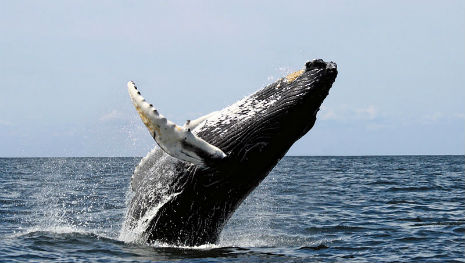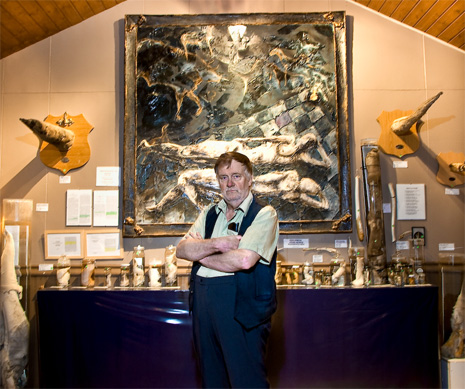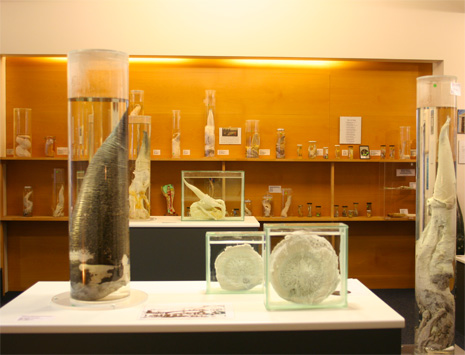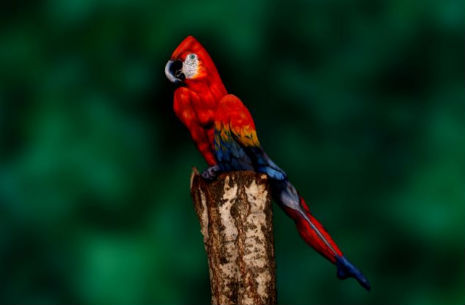
It’s remarkable the things people will go through in the name of science. In the case of Justin O. Schmidt, the man who developed the “Schmidt pain index,” our gratitude is even more difficult to measure. Schmidt, who published his landmark paper “Hemolytic Activities of Stinging Insect Venoms” in 1983, wanted to know which insect stings are the most painful, and in order to do so, he subjected himself to the pricks of countless creepy crawlies—including on his prick.
Reading his descriptions of the varying severity of insect stings, which are rated on a scale from 0 to 4, is quite a bit like reading the most ghastly wine reviews ever. Check it out:
1.0 Sweat bee: Light, ephemeral, almost fruity. A tiny spark has singed a single hair on your arm.
1.2 Fire ant: Sharp, sudden, mildly alarming. Like walking across a shag carpet & reaching for the light switch.
1.8 Bullhorn acacia ant: A rare, piercing, elevated sort of pain. Someone has fired a staple into your cheek.
2.0 Bald-faced hornet: Rich, hearty, slightly crunchy. Similar to getting your hand mashed in a revolving door.
2.0 Yellowjacket: Hot and smoky, almost irreverent. Imagine WC Fields extinguishing a cigar on your tongue.
2.x Honey bee and European hornet.
3.0 Red harvester ant: Bold and unrelenting. Somebody is using a drill to excavate your ingrown toenail.
3.0 Paper wasp: Caustic & burning. Distinctly bitter aftertaste. Like spilling a beaker of Hydrochloric acid on a paper cut.
4.0 Pepsis wasp: Blinding, fierce, shockingly electric. A running hair drier has been dropped into your bubble bath (if you get stung by one you might as well lie down and scream).
4.0+ Bullet ant: Pure, intense, brilliant pain. Like walking over flaming charcoal with a 3-inch nail in your heel.
The pepsis wasp, which clocks in at a brain-shattering 4.0 above, is also called the tarantula hawk, for reasons you can best imagine. Here’s a picture of one: if you see it, run quickly in the opposite direction:
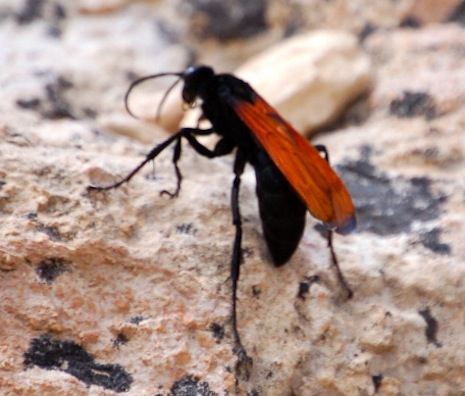
The story of Schmidt is slightly more mundane than the initial impression. As The Straight Dope put it in 2012, “Having spent half an hour on the phone with entomologist Justin O. Schmidt of the Southwestern Biological Institute in Tucson, Arizona, I can confidently report he didn’t volunteer to be stung by every goddamn awful thing in existence. It just sorta happened.” As an entomologist who spends a great deal of time in the field in lush places like Costa Rica, it’s something that happens all too infrequently, whether he wants it to or not. According to Schmidt, the precise valuations listed above are not the product of exacting scientific inquiry and do not appear in his formal papers; rather, they were “wheedled out of him by an editor at Outside magazine, who was trying to goose up a story for that publication in 1996.” (Yeah, yeah, yeah. For fuck’s sake, that just sounds like good editing to me.)
The Straight Dope continues: “One also mustn’t take seriously the wine-review-style descriptions accompanying the sting ratings. For example, the sting of a southern paper wasp is said to be “caustic and burning, with a distinctly bitter aftertaste. Like spilling a beaker of hydrochloric acid on a paper cut.” Such remarks lack empirical basis, Schmidt cheerfully concedes, although if there’s anyone equipped to expound on the fine points of pain, a guy who’s been stung by 150 different species in his lifetime is probably it.”
Still, while we’re at it, it might surprise you to learn that the penis is not the part of the body most sensitive to pain, according to the researches of a man named Michael L. Smith. In his paper “Honey Bee Sting Pain Index by Body Location,” published this year in PeerJ, it’s up there but not in the top slot.
The Schmidt Sting Pain Index rates the painfulness of 78 Hymenoptera species, using the honey bee as a reference point. However, the question of how sting painfulness varies depending on body location remains unanswered. This study rated the painfulness of honey bee stings over 25 body locations in one subject (the author). Pain was rated on a 1–10 scale, relative to an internal standard, the forearm. In the single subject, pain ratings were consistent over three repetitions. Sting location was a significant predictor of the pain rating in a linear model. ... The three least painful locations were the skull, middle toe tip, and upper arm (all scoring a 2.3). The three most painful locations were the nostril, upper lip, and penis shaft (9.0, 8.7, and 7.3, respectively). This study provides an index of how the painfulness of a honey bee sting varies depending on body location.
Fellas, if you’re out in the jungle and you find yourself confronting a swarm of pepsis wasps, put on a hockey mask and expose your penis (or possibly your skull—that’s probably a better idea).
Here’s the pioneering Dr. Schmidt discussing instinct stings and pain management:
via Lost at E Minor







